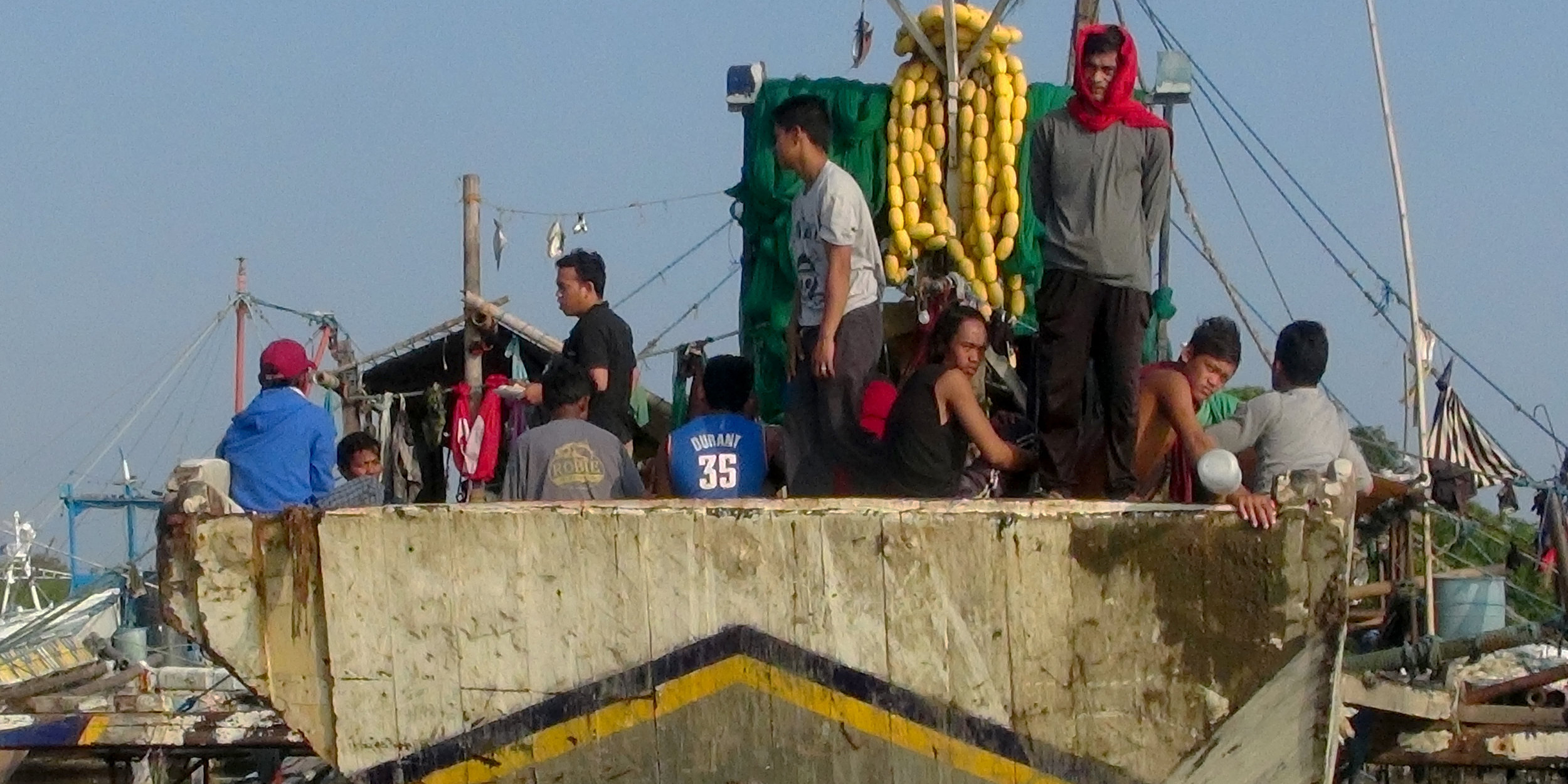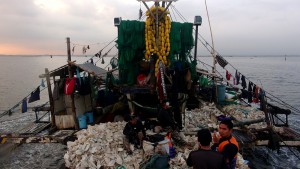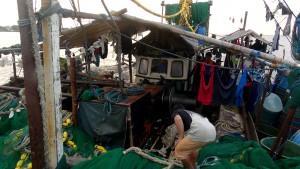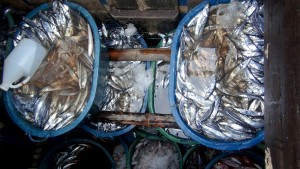After recently assisting in the Philippines on Fisheries Patrols, I have real concerns that their fishery hangs in the balance. There are so many warning signs that a collapse is imminent, but little wonder when you understand the many factors impacting this crucial resource. Part of the challenge though is the problems are systemic, widespread and needing concerted action in multiple directions. I’ve tried to address the most pressing issues I saw below, but sadly, there are many more. It is imperative the Duterte government take command of this issue or their fishery will most certainly be destroyed.
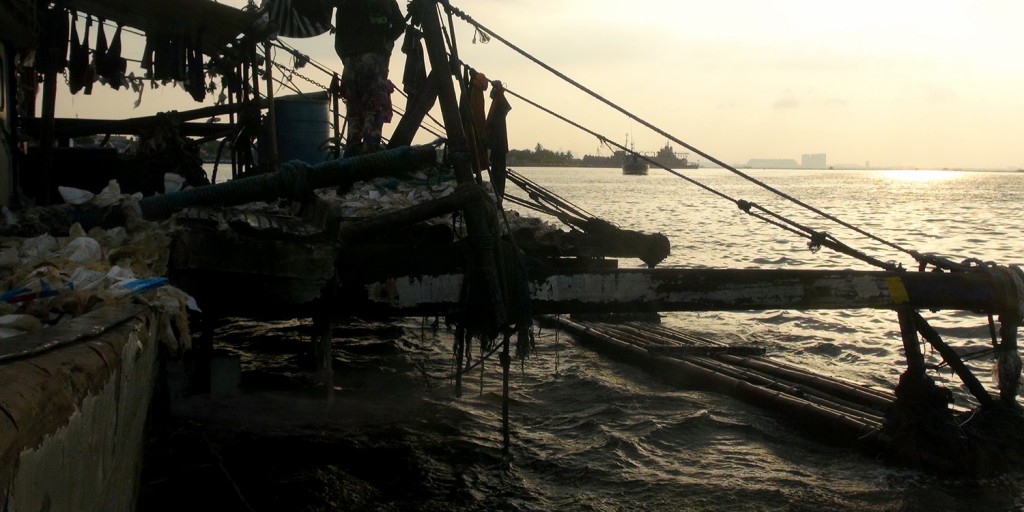
Pirate fishing vessel the “Dan Israel R” being escorted into Manila
Firstly, there are now large numbers of foreign vessels, especially from Vietnam and Taiwan pillaging waters South and West of the Philippines respectively. Indonesia in recent times has thankfully made inroads in tackling illegal fishing – Government forces there have sunk literally hundreds of foreign vessels. This has given the Indonesian Fishery a fighting chance, but it has also forced many illegal operators to send their boats North into Filipino Waters. The Filipino government must make Fisheries a national priority and ensure the pirate fishing vessels liker these are caught (and preferably sunk), or forced out of their waters.
Secondly, there is the nebulous nature of fisheries enforcement in the Philippines – So many agencies are involved but it allows them to sit back expecting others to do the work. As examples, Bantay Dagat (Local Police), Local Appointees, Maritime Police, Marines, Coastguard, Navy, BFAR – These and others may have fisheries responsibilities but most are content to do nothing. Regional Governors are also forming yet more departments to address plummeting fish stocks locally, in part because of inaction by the proper enforcement bodies. There are various suggestions of corruption, incompetence and negligence within many departments, and there is some truth to this, but in many ways, it is poor resourcing and direction from Central Government that has allowed such a situation to flourish. The government should step in and determine a path forward that sees, in my opinion, Navy and BFAR working jointly and comprehensively on Fisheries management. Resource for this should be pulled from Coastguard and Military Police who in my experience remain corrupt and inept in their operations, and who have little support outside of their own fiefdoms.
Linked with this, BFAR must be granted increased resource. Currently they pursue but a tiny fraction of offenders because they simply lack the personnel to adequately do their job. As an example, while on joint Patrols in the Batangas region recently, we came across multiple vessels with teams spearfishing using compressors and inside Marine Protected Areas at night. It involved so many violations, and in any other country those men would be facing hefty fines and boat confiscation. Yet all BFAR and our team could do was issue warnings and move on, as we had so many worse offenders to pursue. BFAR personnel expressed the sentiment that if we brought in all the illegal fishermen, the impound facility would be overflowing with vessels and the court systems completely bogged down with fishermen. This must change – BFAR must be empowered to bring rampant illegal fishing under control.
In parallel with this of course is the Judiciary. The Philippines is trying to address corruption, but there remains countless corrupt Officials that need to be removed from office. Far too often, the few illegal fishing cases brought before the courts have been thrown out under dubious circumstances, and while this continues to happen, their fishery will continue to be plundered. BFAR and their enforcement partners have a hard time in even bringing cases to court, and it must be completely demoralizing to then see their work negated with a single signature from a bribed Judge.
A combination of lax enforcement, political indirection, corrupt officials and under-funding has seen the Philippines become ground zero for the many forms of destructive fishing. On patrol there, I witnessed all of them. At the top of this list is Danish Seine – a form of bottom trawling that was banned in 2014. The team I was with apprehended the “DAN Israel R’ that had been allegedly fishing illegally in Municipal waters with Danish Seine trawl equipment. This vessel is now impounded and BFAR are proceeding with prosecution, but the sad reality is the “Dan Israel R” is just one of so many vessels still using the illegal equipment.
Second on the list is blast (dynamite) fishing, that involves home-made bombs being exploded underwater, killing large numbers of fish within its blast radius. Corals that have taken hundreds or in some cases thousands of years to grow can be obliterated in a matter of seconds, and a 3D seascape rich in biodiversity is rendered into a barren wasteland. The Coral Triangle Conservancy has been monitoring blast fishing using sophisticated acoustic equipment, and reported on average nearly 1,000 blasts every month along just 60km of coastline. A cursory snorkel there, or in almost any other coral area in the Philippines now for that matter, reveals the tell-tale scars of blast fishing. This is not an isolated occurrence, but something that is common and widespread.
Another destructive form of fishing highly prevalent in the Philippines is the use of cyanide poison to stun fish. Divers, often using compressors, squirt diluted liquid cyanide into corals, temporarily stunning fish. Small fish are gathered up for the tropical fish trade, a significant export earner for the Philippines. Larger fish may be injected with amyl nitrate which increases the survival rate, and these are exported live for the restaurant trade. Cyanide fishing is destructive on so many levels – It kills not just the target fish, but many smaller fish and organisms, as well as the corals. In addition, many of the captured fish subsequently die in transit from cyanide shock.
Then there are the teams targeting fish using compressors at night. Coral fish when subject to bright lights at night remain still within the corals, presenting easy targets for spear fishermen. By using compressors, fishermen can dive for an entire night and strip an area bare. We caught several teams spearfishing at night in Marine Protected Areas, and the fish they’d taken were as small as 100mm in length. An MPA subject to this will take years to recover from such activity.
The final fishing method I’ll mention here is nets with excessively small mesh size. The smaller the mesh the smaller the size of fish it will capture. The government has tried to regulate the industry by increasing the minimum mesh size allowed on nets, yet locals are able to plead poverty and get exemptions. This helps them in the short-term – They can catch lots of small fish, but long-term it leads to degradation of the fishery.
I’ve been to the Philippines many times now and I am saddened to write this article. I love the place and its people, but their fishery is becoming a basket case. Having worked in fishery enforcement in many places, the problems in the Philippines are staring me in the face. The situation seems dire, and yet all the above can in fact be managed. It requires a government with backbone prepared to make hard decisions that will upset some people. There is also the question of how to fund the various elements in managing their fishery. The price for this however will be small, relative to the price of a destroyed fishery.
Press Release: 6th June 2017. Earthrace Conservation
By Captain Pete Bethune
Earthrace Conservation.
For comment, call Captain Pete Bethune: +64-9-422-0054
Youtube Videos:
The “Dan Israel R” captured fishing illegally https://youtu.be/1kqITfRbUHM
Illegal Compressor Spear Fishing in MPA https://youtu.be/DMpoNUtv-YU
High Res Images: Click on the images below to download Hi-Res versions. Or click here to go to the Dropbox folder with Hi-Res images. Any images published please credit “Earthrace Conservation”
